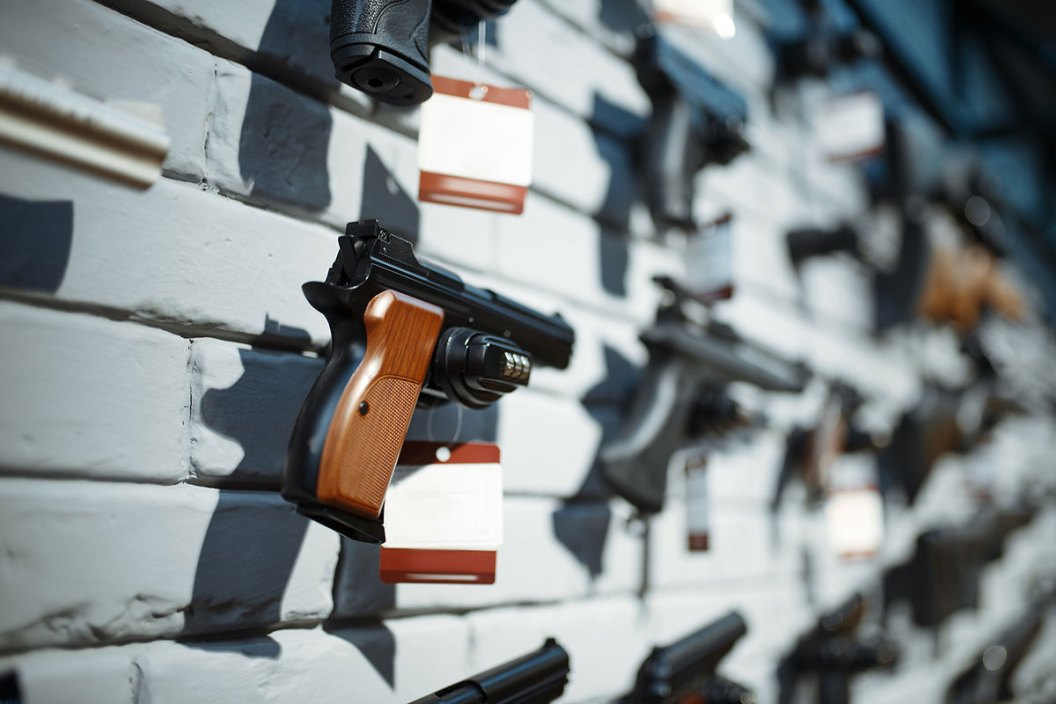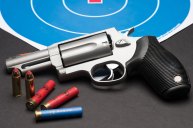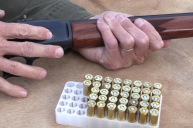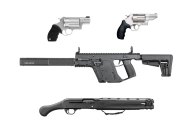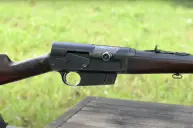Here are a few lesser known bits of gun trivia that will challenge your perception of gun history.
Ready to learn something new today? We've collected some gun facts from the long and storied history of firearms, and wanted to share them with you.
Impress your friends, win a round of trivia, and consider yourself smarter in the ways of the gun world.
Paper Cartridges Are Older Than You Think
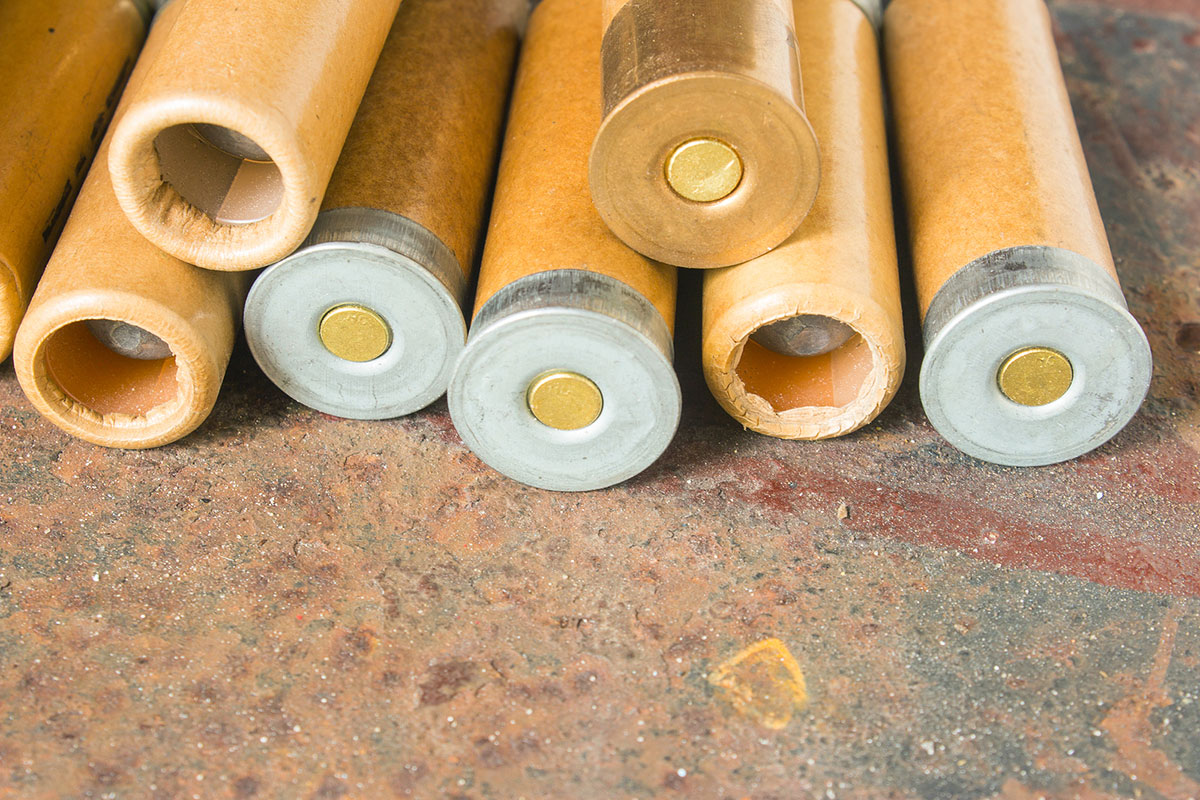
Many people picture firearms before the development of the metallic cartridge being loaded via a powder horn. The fact is, paper cartridges have been around pretty much since handheld firearms have been a thing.
A paper cartridge consisted of a paper cylinder or a paper cone which contained the bullet and a measured amount of gun powder. Some later paper cartridges even had a primer embedded in them and were coated in a lubricating or anti-fouling agent.
The cartridges were also usually coated in beeswax, lard, or tallow which provided a degree of resistance to moisture and lubricated the bullet when loading. It melted when fired, mixing with the powder residue and making it easier to remove. They were also relatively safe to carry.
Some sources date the use of paper cartridges back to the late 14th century, with evidence of their use dating to 1591 and 1597 when they were used by Neapolitan soldiers. By the 17th century, paper cartridges were widely used.
As the ends of the paper cartridges were typically twisted closed, soldiers would bite those ends off before loading them into their guns.
Paper cartridges were relevant well into the days of the Old West, frequently used in cap-and-ball revolvers and early breech loading rifles like the Sharps rifle, before metallic cartridges made them obsolete.
FBI Special Agents Carried Revolvers Until the 1980s
For its first 50 years of existence, the Federal Bureau of Investigation officially issued revolvers only. While it wasn't entirely uncommon for some agents to carry personal semi-auto pistols or different revolvers, the first semi-auto pistol was issued by the FBI in the 1980s.
The Smith & Wesson Model 459 in 9mm was given to the Bureau's SWAT teams and the new Hostage Rescue Team. In the '80s, the HRT was also using Browning Hi-Power pistols in 9mm customized by Wayne Novak and bureau gunsmiths. These were later replaced by 1911-style single-action .45 ACP pistols made by Les Baer.
The famous Miami Shootout in April 1986 spurred many law enforcement organizations to switch police officers from revolvers to semi-auto sidearms, like the Los Angeles Police Department, which adopted the Beretta 92FS in the late '80s.
After the shootout, the FBI switched to 147-grain subsonic ammo as a temporary solution to the perception that the 9mm was underpowered. The FBI then adopted the SIG P226, also chambered in 9mm, in 1988. It was used by SWAT teams and to replaced aging S&W 459s.
Then, the SIG P228 was selected for agents to use. However, through all these changed, agents close to retirement were still allowed to carry their old wheelguns.
There was a push for the bureau to transition to the more powerful .45 ACP, but the FBI wanted something between the .45 and the 9mm. They settled on a .40 caliber round, but at the time, the only .40-caliber ammo on the market for autoloaders was the powerful and hot 10mm Auto.
The Bureau adopted the large frame S&W Model 1076 loaded with light 10mm Auto loads. At the same time, S&W and Winchester Ammunition were working on a new cartridge, the .40 S&W. The 10mm didn't work out so well, proving to be too much gun with too much recoil for many agents, so the FBI switched back to the SIG P226 and P228 and the 9mm for awhile before adopting Glock G22 and G23 pistols chambered in the new .40 S&W in 1997.
Today, the Bureau still carries Glocks, but they've gone back to the 9mm. What a roller coaster!
Rifled Muskets Were Harder and Slower to Reload Than Smoothbore Muskets
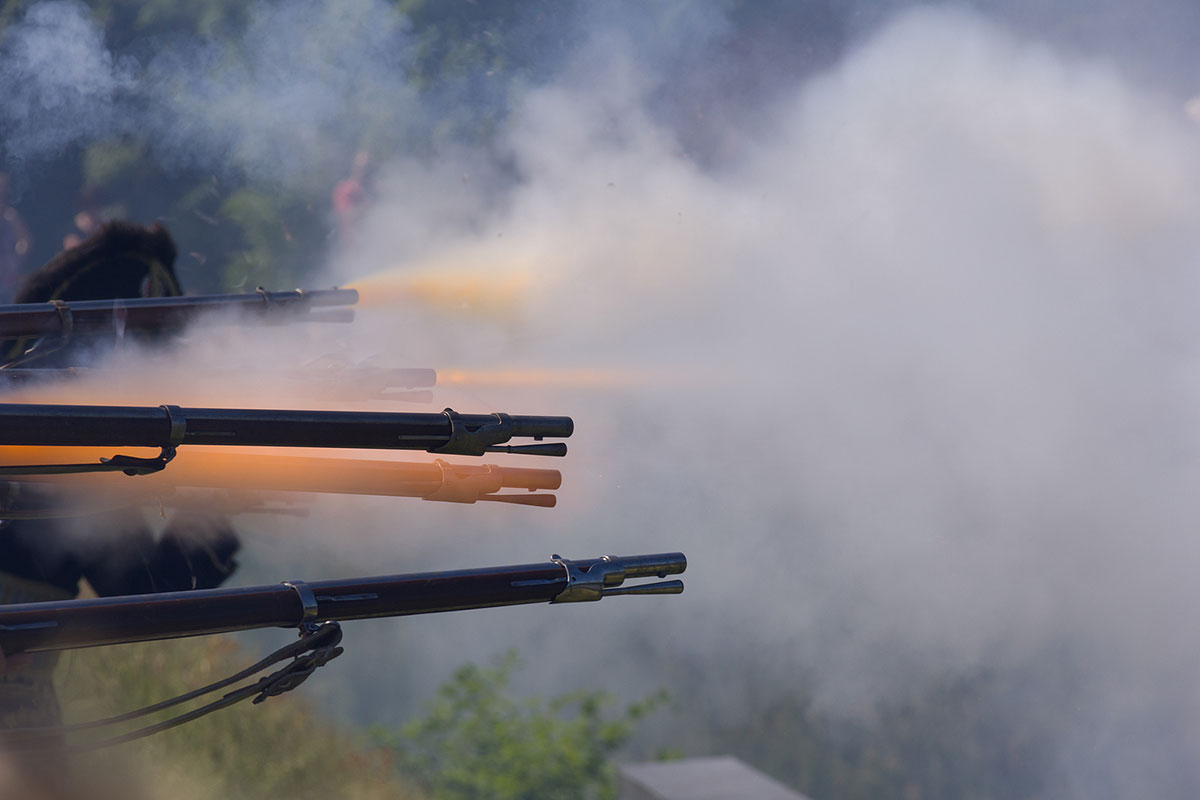
When someone starts learning about early muzzleloaders, they'll find out that, during the American Revolution, rifled muskets were far less common than smoothbore muskets. This is despite the fact that they were more effective and had much greater range and accuracy.
Some might think that this is because a rifled bore was more difficult and expensive to manufacture, but that's not the only reason.
Armies at the time were based on regular and standardized firing lines, and soldiers had to be able to reload their musket within a certain time window. Rifled muskets are slower and more difficult to load, because the projectile has to have a tighter fit in the bore to catch the rifling, meaning it takes more muscle to ram it down the barrel.
Plus, in the days of black powder, the rifling picked up a good deal of fouling after a few shots, making them even more difficult to load. They also had to fire specially-shaped conical bullets for the greatest effect, while smoothbore muskets could fire simple-to-make lead balls.
For hunters of the era, none of these drawbacks were an issue, which made rifled muskets their go-to firearms. But in a military setting in the conventional warfare of the day, they could be a hinderance for large forces.
A Father and Son Duo Invented the First Machine Gun and the First Suppressor
The Maxim Gun was the first fully automatic machine gun. It was developed by American-British inventor Sir Hiram Stevens Maxim in 1884—that's during the era we consider today as the "Old West."
Maxim's gun was capable of firing 600 rounds per minute, which, at the time, was revolutionary and changed ground combat forever.
The gun used one of the earliest recoil-operated firing systems and included a water cooling system for the barrel, allowing it to maintain a rate of fire without requiring the multiple rotation of barrels like the hand-cranked Gatling gun.
The gun was heavy, complex, required a supply of water in addition to belted ammunition, and was designed to be operated by a team of four to six men.
While the gun saw plenty of use, by the time World War I rolled around it was outdated and most armies had moved on to newer models. The famed British Vickers machine gun was actually based on the Maxim and introduced in 1912, and some models were mounted on early biplanes. It remained in service until 1968.
Hiram Maxim's son, Hiram Percy Maxim, was also an inventor and designed the first commercially successful firearms suppressor in 1902. It was dubbed the "Maxim Silencer," which is why suppressors are so often called silencers, even today.
Maxim developed the muffler for combustion engines (which are very similar in concept) in tandem with his suppressor, which is also why people in some English-speaking countries call mufflers "silencers."
Some Gun Control Laws Are Really Old
Certain gun control laws in the United States are not as old as you might think, while others have been around for a while—but some would be surprised to learn that the idea of federal gun laws is entirely a 20th century invention that didn't come until the mid 1930s.
The first piece of federal gun control legislation ever passed was the National Firearms Act (NFA) of 1934. The federal law was largely drafted and passed as a reaction to the high profile and violent crimes committed by mob outfits, like Al Capone's criminal organization in Chicago, and Depression-era gangs like the Clyde Barrow gang, and John Dillinger.
While their exploits were often bloody and got a lot of ink, like the St. Valentine's Day Massacre in 1929, their crimes were largely isolated incidents rather than the norm in the U.S., even during those trying times.
The NFA encompasses a lot, but in general, it defines the legal overall length and barrel length for rifles and shotguns, semiautomatic or otherwise, with anything shorter dubbed a Short Barreled Rifle or a Short Barreled Shotgun, which have to be registered by gun owners and require a special tax to transfer them to the owner.
The NFA also regulates full-auto firearms or machine guns; destructive devices such as grenades, bombs, and any firearm with a bore larger than .50 caliber; and suppressors. The transfer tax for all firearms in those categories is $200, which is significant today, but was designed to deter ownership of these firearms almost completely back in 1934.
So yeah, before June 26, 1934, it was completely legal for any citizen to own a machine gun, a box of grenades, a shotgun cut down to pistol size, and a Maxim silencer with no paperwork, registration, or special taxes.
On top of this, there are over a dozen states, like California, New Jersey, and New York, that add additional restrictions on many NFA items.
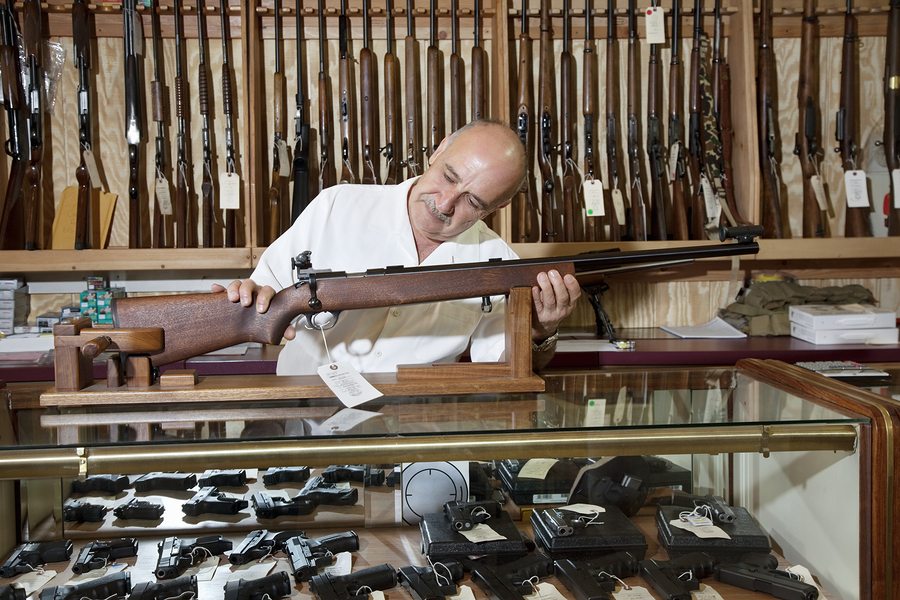
Additionally, before 1968, firearms could be sold by pretty much anyone. They were available through mail-order catalogs that delivered them right to peoples' doors, and were available at pretty much every hardware store and sporting goods store in the country. Also, anyone with the skill and necessary tools could build a firearm, and as long as it complied with the NFA, it was legal to own.
When the Gun Control Act of 1968 (GCA) was passed, it established the Federal Firearms License, which required all manufacturers and dealers of firearms who ship or receive guns or ammunition in interstate or foreign commerce to have a license to do so. It also forbade them from transferring guns or most ammunition to people who live in different states, unless specific conditions are met. The NFA also established criteria for people who were prohibited from owning firearms.
Like the NFA, the GCA was prompted by a high profile crime of firearm homicide, the assassination of President John F. Kennedy. That act was reportedly carried out with a mail-order bolt action rifle.
The third major piece of federal gun control legislation was, again, precipitated by a high profile act of violence. The Brady Handgun Violence Prevention Act was passed in 1993 while Bill Clinton was in the White House during a wave of anti-gun advocacy. It is named for James Brady, who was shot and paralyzed by John Hinckley Jr. during an attempted assassination of President Ronald Reagan in 1981.
The federal law mandated that federal background checks be performed on all firearm purchasers in the United States. This also came with a mandatory five-day waiting period on all gun purchases, until the National Instance Criminal Background Check (NICS) was implemented in 1998.
In the span of 64 years, American citizens went from being able to own pretty much any gun, which could be sold by pretty much anyone, to firearm sales being fairly tightly regulated and limited by certain features or size, requiring background checks for all gun sales, tax stamps and additional paperwork and checks for some firearms, and mandatory federal licenses for all gun dealers.
Yet gun sales and gun ownership have continued to rise, including sales among first time buyers, with a huge sales spike during the COVID-19 pandemic. All the while, gun violence has actually fallen dramatically since the 1990s, despite the fact that more Americans own guns than ever before, and many legally carry them for self-defense.
Today, federal firearm laws are enforced by the Bureau of Alcohol, Tobacco, Firearms and Explosives (ATF). The National Rifle Association opposed these laws and many gun rights activists view these laws as infringements on the Second Amendment and the right of Americans to bear arms.
For guns, ammo, and accessories, be sure to check out Cabelas.com.
NEXT: TOUR OF TEXAS: HUNTING WITH SAVAGE THROUGH THE LONE STAR STATE
WATCH
